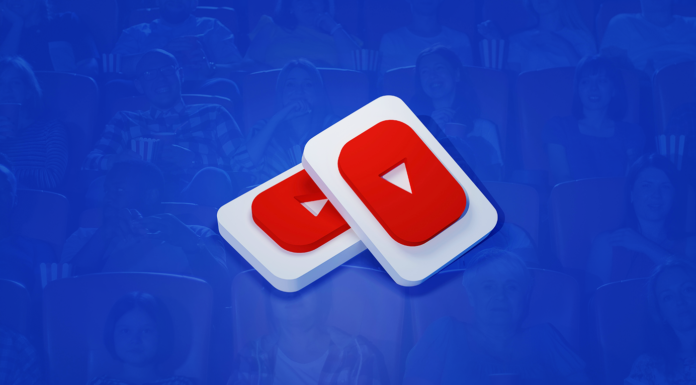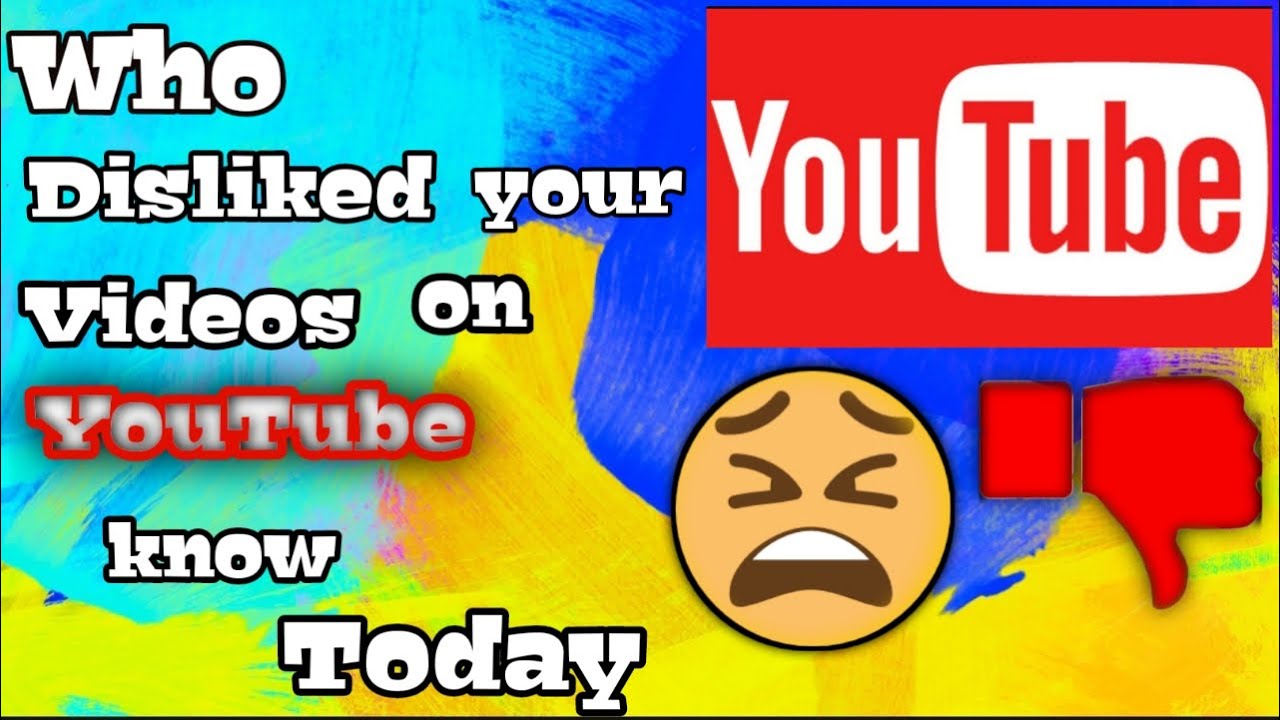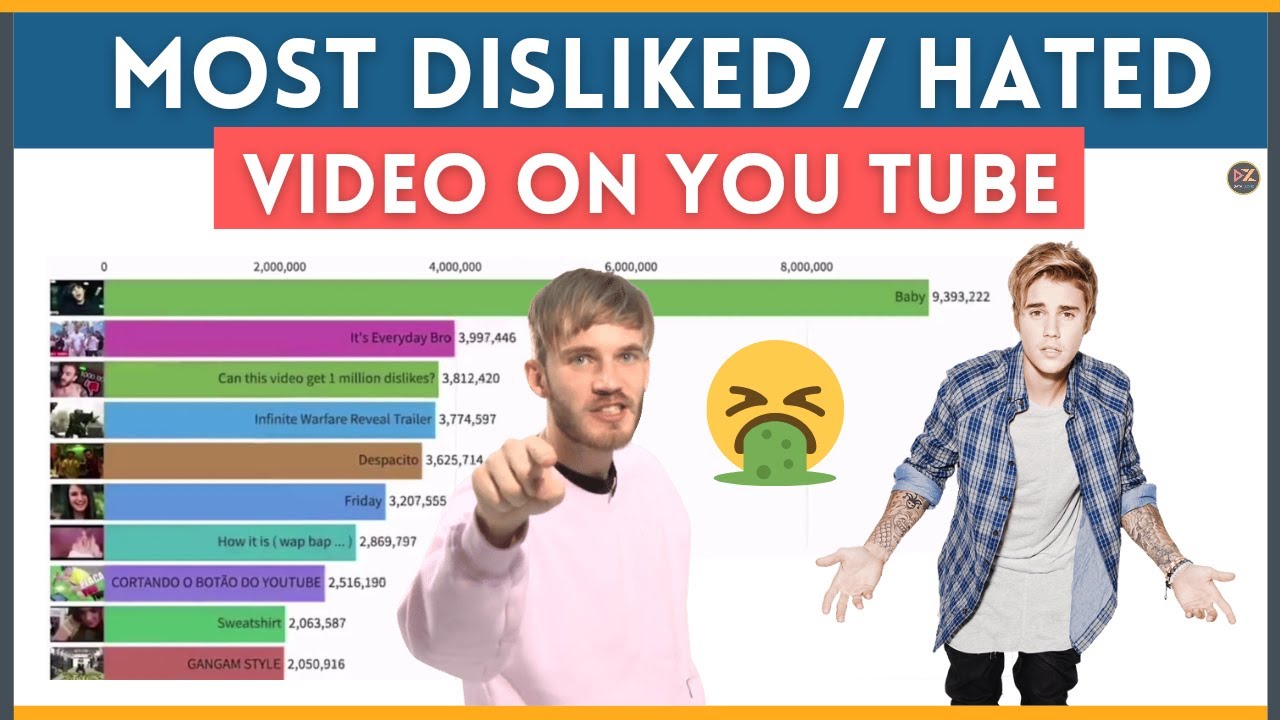YouTube has become a massive platform for sharing videos, ranging from tutorials to entertainment. One feature that has been a topic of discussion among creators and viewers alike is the "dislike" button. Many wonder if YouTubers can see who disliked their videos. This blog explores the realm of dislikes on YouTube, delving into what they mean and how they affect both creators and the viewing experience.
Understanding YouTube's Dislike Feature

YouTube's dislike feature has been a staple of the platform since its early days. When viewers click the dislike button, it registers a vote against the video. However, the intricacies behind this action are more nuanced than they seem. Let's unpack them.
What Happens When You Dislike a Video?
When you dislike a video, it does a few things:
- It decreases the video's overall "like" to dislike ratio.
- It helps YouTube's algorithm understand the audience's engagement and satisfaction.
- It can influence recommendations — which means a higher dislike ratio might prevent the video from being recommended to others.
Privacy Concerns
One of the most significant aspects of dislikes is privacy. YouTube made a decision to keep the identity of those who dislike videos anonymous. This means that while a creator can see the total number of dislikes on their video, they cannot see who clicked the button. This anonymity serves a purpose:
- It encourages honest feedback without fear of retribution.
- It allows viewers to express their opinions without being targeted or harassed by the creator or other fans.
The Impact on Creators
For creators, understanding the dislike button's implications is crucial. While a few dislikes can sometimes sting, it's essential to view them constructively. Here’s why:
- Constructive Feedback: Dislikes can indicate issues with content quality, presentation style, or viewer expectations.
- Content Improvement: By analyzing videos with higher dislike ratios, creators can adjust their future content to better meet their audience's desires.
- Viewer Engagement: Dislikes are just one part of the broader engagement picture. A video with many dislikes might still have a high view count, indicating that viewers are engaging, albeit with mixed feelings.
What Can You Do with Dislikes?
While the dislike button can be a daunting aspect for any YouTuber, here are a couple of strategies for handling them effectively:
- Analyze Feedback: Assess the content and themes that garnered dislikes. Are there clear patterns? This insight can lead to improved future videos.
- Engage with Your Audience: Use comments as a tool for communication. Ask viewers why they disliked a video and show them you value their input.
In conclusion, while YouTubers cannot see who disliked their videos, they can still gain valuable insights from the overall dislike count. Embracing this feedback can lead to personal growth and an enhanced viewer connection. Remember, dislikes aren’t the end of the world; they can be a stepping stone toward better content creation!
Also Read This: How to Upload Videos on YouTube Fast: Speed Up the Upload Process
3. Can Creators See Who Disliked Their Videos?

It's a common question among many YouTube creators: can they see who disliked their videos? The answer is a simple no. YouTube prioritizes user privacy and does not provide creators with specific information about the individuals who click the dislike button on their videos. This means that while they can see the total number of dislikes, the identities of those users remain completely anonymous.
This anonymity is a protective measure designed to ensure that viewers can freely express their opinions without fear of backlash or retaliation from creators. Imagine if you were worried about your favorite YouTuber finding out you disliked their video—it might prevent you from sharing your honest opinions! By keeping that information private, YouTube encourages constructive criticism and allows audiences to voice their preferences.
However, creators do have access to some valuable metrics regarding the overall engagement of their videos. They can analyze overall like-to-dislike ratios, which can give them insights into how their audience is responding to their content. For example, if a video has a high number of dislikes compared to likes, it could signal to the creator that something might need to change, whether it's the video topic, presentation style, or even the thumbnail. Here’s what creators can generally see:
- Total number of likes and dislikes
- Viewer demographics (age, gender, location)
- Traffic sources (where viewers found the video)
- Watch time and retention rates—key indicators of engagement
So, if you’re ever feeling brave enough to hit that dislike button, rest assured—it’s just a number in the grand scheme of interaction and feedback, and your identity remains safe and sound!
Also Read This: Adding YouTube Videos Longer Than 15 Minutes to Your Channel
4. The Impact of Dislikes on YouTube Creators

Dislikes can have a significant impact on YouTube creators, even if they can't see who dished them out. Let's break down how dislikes influence a creator's experience and strategy on the platform.
For starters, dislikes can be a double-edged sword. On one hand, they can be disheartening. Creators often pour their hearts and souls into their content, and seeing a wave of dislikes can feel like a personal attack. This negative feedback might even discourage some from creating further content, especially if they take the reactions to heart.
On the other hand, dislikes can serve as valuable feedback. They might indicate that something in the video didn't resonate with viewers. Maybe the topic wasn't what the audience was expecting, or perhaps the content was lacking in quality. Many successful creators have learned to view dislikes as stepping stones for improvement rather than roadblocks. For example:
- Content Adjustments: Creators often evolve their content based on viewer feedback, including dislikes.
- Audience Understanding: Dislikes can help creators better understand their audience's preferences and avoid pitfalls in future videos.
- Engagement Strategies: Sometimes negative feedback can spark discussions in the comments, leading to increased engagement.
Moreover, YouTube’s algorithm takes into account not just likes and dislikes but overall engagement. A video with many dislikes might see less distribution, but if there are also lots of comments or shares, it can still perform well. Creators often navigate these metrics to find a balance in their content.
Ultimately, while dislikes can sting, they can also foster growth and improvement for creators willing to embrace feedback. So the next time you’re contemplating whether to hit that dislike button, remember—it might help the creator understand their audience a little better!
Also Read This: How Tall Is Oblivion the YouTuber? Insights into the Creator's Persona
5. How Dislikes Affect Video Performance and Visibility
Have you ever wondered how dislike buttons on platforms like YouTube impact a video's performance? Well, you're not alone! Let's break this down in a way that’s easy to digest.
When a viewer clicks the dislike button, it sends a signal to YouTube’s complex algorithm about the content’s reception. While likes can boost a video's visibility, here’s how dislikes play their role:
- Engagement Metrics: YouTube considers all viewer interactions—likes, dislikes, comments, and shares—as part of its engagement metrics. A higher number of dislikes can indicate that viewers are less pleased with the content, which may reduce its attractiveness to the algorithm.
- Click-Through Rate (CTR): If a video has a lot of dislikes compared to likes, prospective viewers might be deterred from clicking on it. This can lead to a lower CTR, which is crucial for a video’s success on the platform.
- Watch Time: Viewers are likely to abandon videos that they dislike, reducing the overall watch time. Since YouTube prioritizes watch time, less engagement could mean that the video is shown less frequently or even buried under other content.
But it’s not all doom and gloom! Dislikes can also be viewed as constructive feedback. If many viewers dislike a video, the creator might consider this input when planning future content, leading to improvements that could ultimately boost their channel's performance.
In summary, while you might think of dislikes as purely negative, they contribute to a broader understanding of viewer preferences and can inadvertently help shape better content for the audience in the long run. Remember, every interaction counts on platforms like YouTube!
Also Read This: Can You Access Netflix Through YouTube TV? Streaming Options Explained
6. Viewer Feedback: The Importance of Dislikes
Now that we’ve explored how dislikes affect video performance, let’s dig into the role they play as a form of viewer feedback.
At its core, YouTube is about sharing content and connecting with audiences. When viewers hit that dislike button, it’s not just a simple rejection; it’s an opportunity for creators to understand what resonates and what doesn’t.
- Understanding Preferences: Dislikes can reveal audience preferences that are not always obvious through likes and views alone. For instance, if a creator uploads two similar videos and one receives significantly more dislikes, they can infer that the latter didn’t connect with their audience. This insight is invaluable!
- Encouraging Improvement: Feedback, whether positive or negative, can drive improvement. Creative professionals often rely on audience reactions to refine their style, presentation, or topics. Constructive criticism through dislikes can lead to better content in the future.
- Creating Expectations: When viewers articulate their discontent via dislikes, they help set expectations for creators. If a series or theme consistently receives unfavorable feedback, it gives creators vital cues to pivot or take a different approach.
But it’s crucial for creators to view dislikes as a part of the learning curve. Not every video will hit the mark, and that's okay! Even the most successful YouTubers face dislikes. What matters is how they choose to incorporate that feedback.
In a nutshell, dislikes are an integral aspect of online engagement. They provide a clear message from the audience about what works and what doesn’t. So, next time you see a dislike on a video, remember: it’s not just a thumbs down; it’s also an opportunity for growth and understanding in the ever-evolving world of content creation.
Also Read This: How to Clear Liked Videos on YouTube Managing Your Likes
7. Strategies for YouTubers to Handle Dislikes
Dislikes on a YouTube video can feel like a punch to the gut, especially if you've poured your heart and soul into creating content. But fear not! Dislikes are not the end of the world; instead, they can be stepping stones towards growth and improvement. Here are some effective strategies for YouTubers to handle those dislikes and turn negatives into positives:
- Stay Objective: Remember that a dislike isn’t a personal attack. Try to detach your emotions from the metrics. Look at it as a part of the content creation process.
- Analyze Viewer Comments: Dive into the comments section! Often, viewers who dislike your video will leave constructive feedback. Paying attention to these insights can reveal areas for improvement that you might have overlooked.
- Engage with Your Audience: Responding to both likes and dislikes shows that you care about viewer opinions. Start a conversation! This not only helps build community but can provide clarity on what your audience wants.
- Evaluate Your Content: Take a step back and assess the video that got dislikes. Was it too long? Did it cover a topic that didn't resonate? Use analytics to understand viewer engagement and drop-off rates. This data can guide you in future videos.
- Learn and Adapt: Every dislike is a chance to learn. Update your content creation strategy based on the feedback - it can be as simple as altering your presentation style or focusing on more relevant topics.
- Emphasize Positives: Focus on engagement metrics that matter, such as subscriptions, comments, and likes. A video with dislikes may still be well-received overall if it garners a good number of likes and positive interactions.
- Ban the Negative Feelings: If dislikes start getting you down, it’s okay to take a break from monitoring your video stats. Focus on creating and enjoying the process rather than obsessing over what others think.
By handling dislikes proactively and positively, you can redefine them as opportunities for growth rather than setbacks. Remember, every great YouTuber has faced their share of dislikes – it’s all part of the game!
8. Conclusion: Embracing Feedback on YouTube
At the end of the day, every piece of feedback – whether a like, a dislike, or an insightful comment – is essential in shaping your content on YouTube. Embracing both positive and negative feedback prepares you for a successful journey in the vast world of video creation.
While it’s natural to feel disheartened by dislikes, consider them a part of your evolution as a creator. Dislikes can guide you towards understanding your audience better and making content that truly resonates with them.
Ultimately, YouTube is a platform where diversity thrives. Different people have different tastes and perspectives, leading to meaningful discussions. By cultivating an open mindset and viewing dislikes as valuable lessons, you can enhance not only your videos but also your relationship with viewers.
So, let's raise a toast to feedback in all its forms! Embrace the dislikes, learn from them, and continue doing what you love – because that’s what truly matters.
 admin
admin








